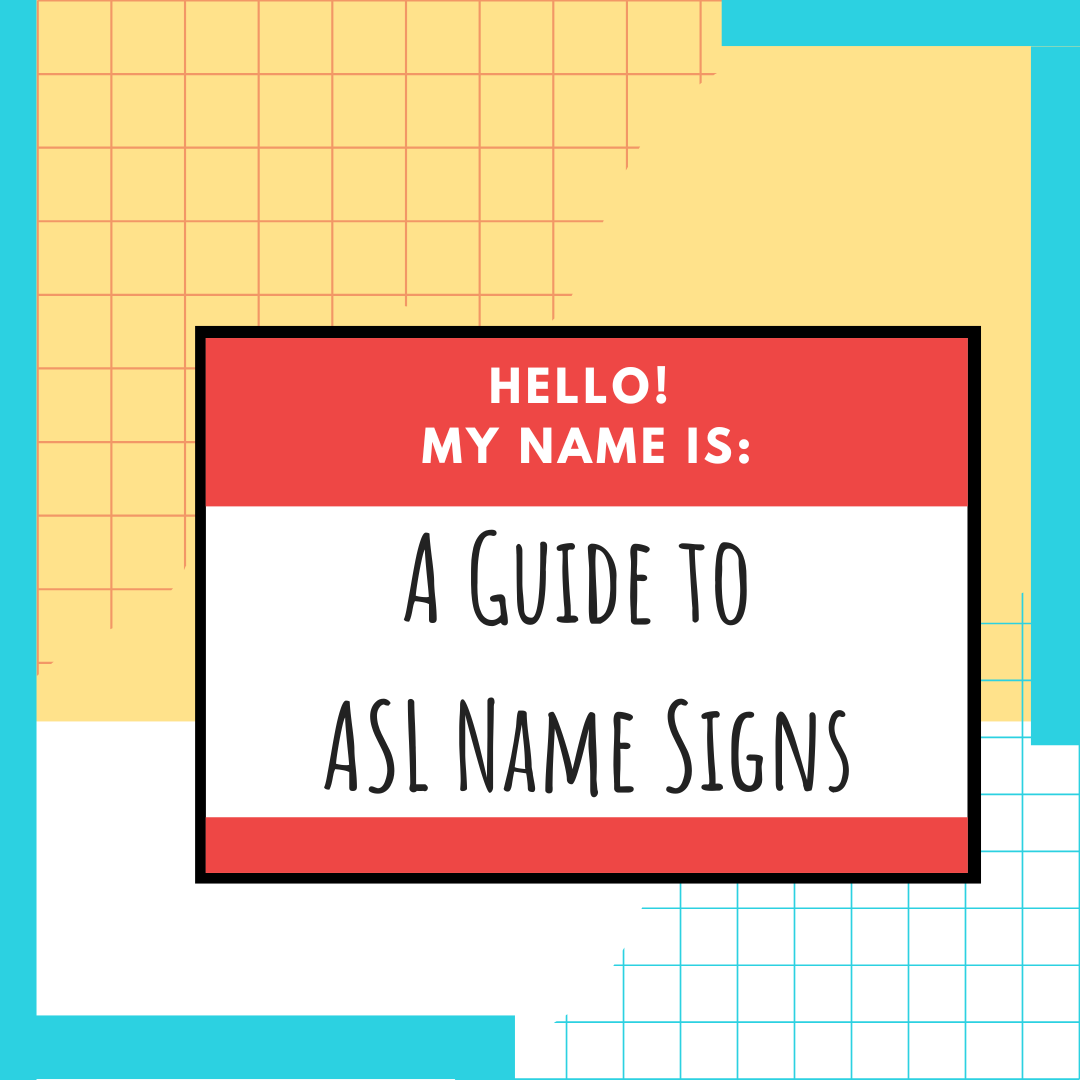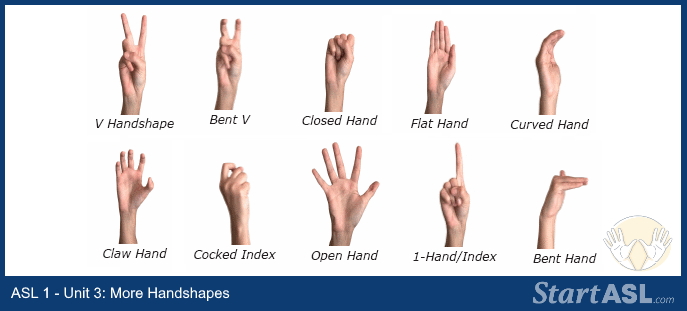
Learn Sign Language Online: ASL 1 – Unit 3 Sample
In this unit sample as you learn sign language online, you will learn about the five sign parameters.
Vocabulary – School & Education
The Five Sign Parameters
Just like how we see English words as the arrangement of letters, there are five basic sign language elements that make up each sign. If any of these parameters are changed when creating a sign, the meaning of the sign changes.
The five parameters are:
- Handshape – This is the shape of your hand that is used to create the sign.
- Movement – This is the action that makes the sign.
- Palm orientation – This is the orientation of your palm.
- Location – This is the location of the sign on your body.
- Non-manual Markers – This is the various facial expressions or body movements that are used to create meaning.
The fifth element, non-manual markers, has only recently been included with this list.
American Sign Language is a very expressive language and understanding these elements will give you a better understanding of how signs are made and what makes them different.
Parameter #1: Handshape
All signs are formed using a specific handshape. In addition to the handshapes of the manual alphabet and numbers, below are some other common handshapes used in American Sign Language. It is important to know the names of these handshapes because ASL classes, dictionaries, and instructors use these terms to describe how to create signs. Changing the handshape of a sign changes the meaning of a sign, so it is important to know how to accurately form these handshapes.

Parameter #2: Movement
The movement of a sign is the action that is used to create the sign. The movement can be in a circle, up and down, forward or backward, etc. If you change the movement of a sign, you can change the meaning of a sign.
For example, for the sign “chair,” you move your dominant hand up and down twice and for the sign “sit,” you move your dominant down once. A simple change of movement changes the meaning of that sign.
Your Dominant Hand
You have a dominant and non-dominant hand. If you are right-handed, your right hand is your dominant hand. If you are left-handed, your left hand is your dominant hand. If you are ambidextrous, choose one hand to use as your dominant hand, and stick with it.
There are three types of signs when it comes to what hand you will use:
- One-handed signs: Use only your dominant hand. (i.e. MAN)
- Symmetrical Two-handed signs where both hands move: Move both your dominant and non-dominant hand. These signs normally use the same handshape and movement for both hands. (i.e. SCIENCE)
- Asymmetrical Two-handed signs where one hand moves: Move your dominant hand and keep your non-dominant hand stationary. (i.e. DRAW)
In the video below, each type of sign will be demonstrated. Notice which hands the signer uses for each sign.
Your non-dominant hand will never move unless your dominant hand is moving the same way. This may be difficult to control, but it is very important for when you move into more complex signing. You don’t want to get confused!
Take Our Free ASL 1 Course
This unit is just a sample of our complete course where you can learn American Sign Language quickly and easily. Enroll in our Free ASL 1 Course today!
Start Learning ASL Today!
 Ready to start learning real American Sign Language and not just basic signs? Do you want to be a part of the vibrant Deaf community? Check out our Free ASL 1 Course or our Complete 4-Level ASL Course options and start learning ASL today!
Ready to start learning real American Sign Language and not just basic signs? Do you want to be a part of the vibrant Deaf community? Check out our Free ASL 1 Course or our Complete 4-Level ASL Course options and start learning ASL today!








